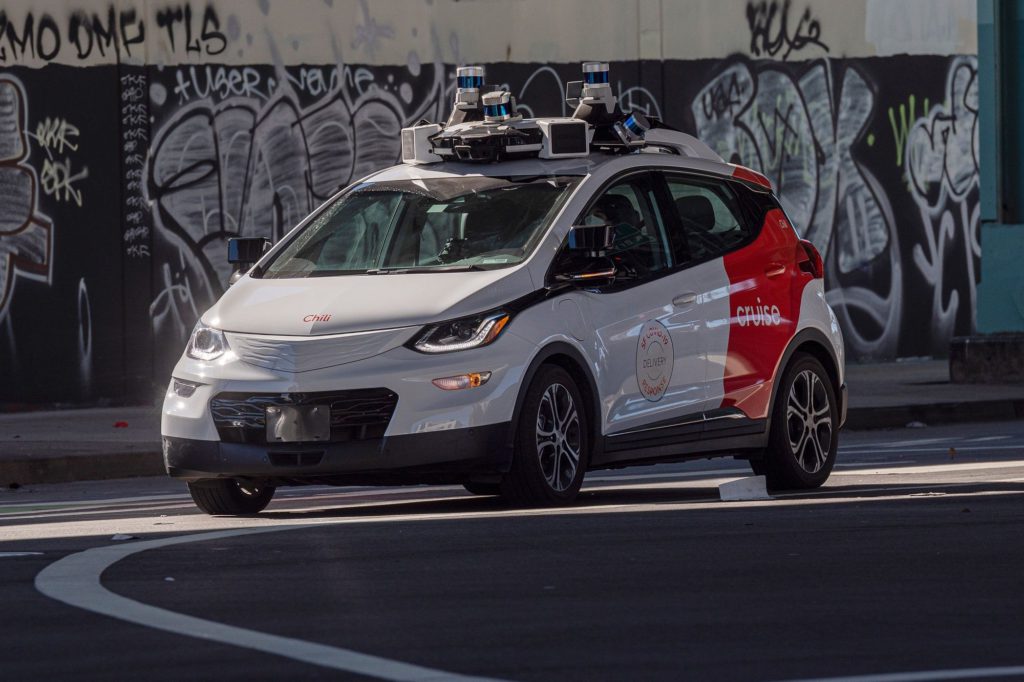(Bloomberg) — General Motors Co.-backed self-driving startup Cruise LLC is facing scrutiny from US regulators and its own board of directors after a pair of on-road incidents raised questions about how ready the company is to expand its services.
GM’s autonomous-vehicle unit scored a triumph last month when it beat Alphabet Inc.’s Waymo to market with permission to charge for rides. The next day, there was an accident involving a Cruise car and a Toyota Prius that left two people with minor injuries. Later in June, as many as a dozen Cruise vehicles stopped at a single intersection due to a technical problem, blocking other motorists for more than an hour.
Since then, state regulators and the San Francisco Municipal Transportation Agency have been in contact with Cruise because residents complained about the traffic jam. The National Highway Traffic Safety Administration has also contacted Cruise requesting information. Cruise spokesperson Aaron McLear said the NHTSA “has not opened a formal investigation into Cruise” for these or any other issues.
Cruise’s board of directors — which is controlled by top GM executives including Chief Executive Officer Mary Barra — has also taken notice. It has pressed the startup on whether its processes were robust enough, said people familiar with the matter who asked not to be named because the conversations were private.
One Cruise director, GM General Counsel Craig Glidden, asked many questions about the June 28 incident that saw a cluster of Cruise cars gum up an intersection shortly after midnight, the people said.
“We listen to feedback from various regulatory agencies and we take it seriously,” McLear said. “We also review our operations regularly.”
Expansion Plans
While neither of the incidents caused serious injuries, they serve as a reminder of the limitations of nascent self-driving technology and put pressure on Cruise to ensure its technology doesn’t become a nuisance or, worse, a safety hazard.
The snafus come just as Cruise is beginning to commercialize its technology, charging fares in part of San Francisco between 10 p.m. to 6 a.m. It hoped to grow quickly to the rest of the city and beyond, but there are some managers inside Cruise who are questioning whether the service is ready for rapid expansion, one of the people said.
McLear said the latest incidents won’t slow down Cruise’s plans unless regulators in California delay expanding permitted services as a result.
“We’ll continue to work with our regulators to safely expand our operations,” he said.
Still, Cruise may need to make sure it has its processes working smoothly before moving to daytime hours when traffic is heavier, said Sam Abuelsamid, principal analyst with Guidehouse Insights.
“It might be that it’s time for a pause in the commercialization of autonomous vehicles,” Abuelsamid said. “We have a lot of work to do with AV services. They need to operate all hours of the day in all parts of the city before they can think about expanding somewhere else.”
Traffic Jam
The first incident to raise concern was on June 3, when a Cruise vehicle with a passenger got in an accident with a Prius that was speeding through a turn lane. The Cruise vehicle stopped while making a left turn and was hit by the Prius, which was traveling at 40 miles (64 kilometers) per hour in a 25 miles-per-hour zone. The Prius also went straight through the intersection in a right-turn lane, the police report said. The report did not say why the Cruise vehicle stopped. Passengers in both cars sustained minor injuries.
The traffic obstruction took place on June 28, less than a week after Cruise started charging for rides, and occurred as a result of two key problems.
First, Cruise identified that there were intermittent connectivity issues between the cars on the road and the remote assistance staff who can help those vehicles make decisions if they’re unsure how to handle unusual situations. That prompted the company to call them back to the depot.
Then, 10 or 12 of the vehicles headed back on the same route and ended up in the same intersection. There was a connectivity issue at that location and the cars all stopped in place, sitting still for more than an hour.
There was no accident and no one was injured, but the Cruises caused a traffic jam in early morning hours. If that had happened in the afternoon, the logjam could have been much worse. It took Cruise employees almost two hours to arrive and manually drive the cars back.
That, too, is another aspect of the incident that Cruise is reviewing: why it took so long for the company to get its cars off the road.
Anonymous Letter
The California Public Utilities Commission, which approved Cruise’s permit to charge fares, is also looking at an anonymous letter that says the company takes too long to address vehicle safety concerns from employees. The letter, sent by someone who claims to be a Cruise employee, also says vehicle retrieval events like the one that occurred on June 28 happen frequently. CPUC spokesperson Terrie Prosper said that the CPUC is looking into the letter and trying to determine its validity.
In response, Cruise pointed out that 94% of its employees said in an April survey that safety is the company’s top priority.
“Our safety record is tracked, reported, and published by multiple government agencies. We’re proud of it and it speaks for itself,” McLear said in an email.
McLear also said the technology issues that caused the traffic snarl were fixed “the next morning.”
The company’s service is regulated by the California Department of Motor Vehicles, which is looking into the incident. “The DMV is aware of the incident on June 28 in San Francisco and is meeting with Cruise to gather additional information,” said California DMV spokesperson Kimberly Keys.
More stories like this are available on bloomberg.com
©2022 Bloomberg L.P.











